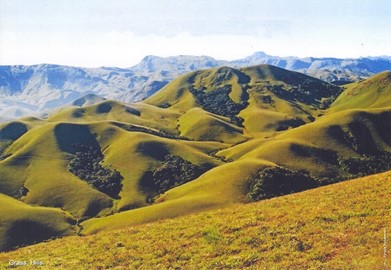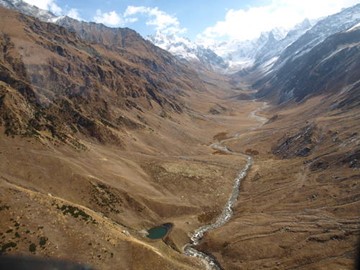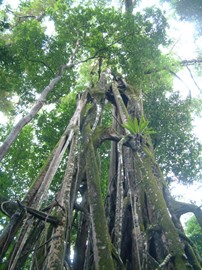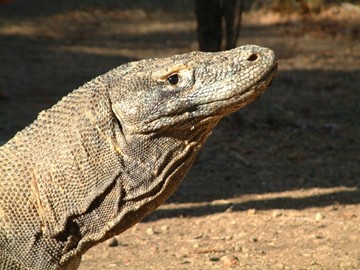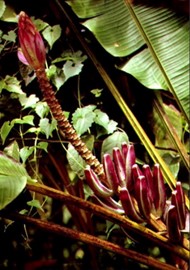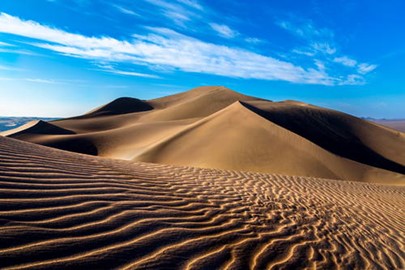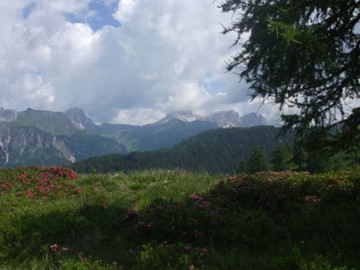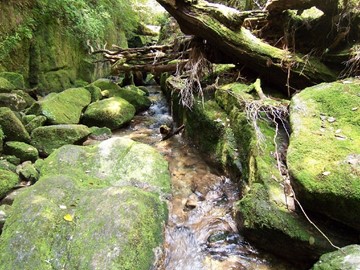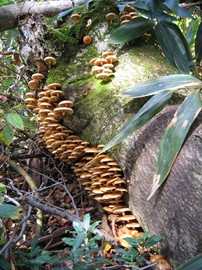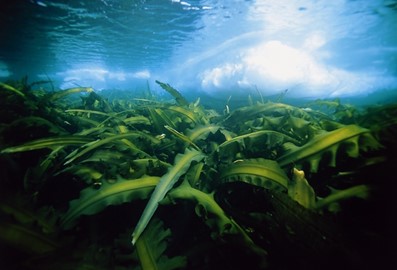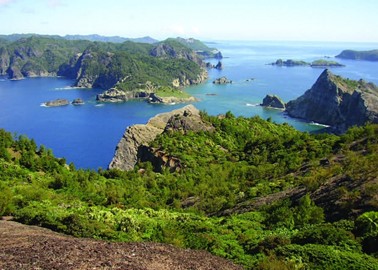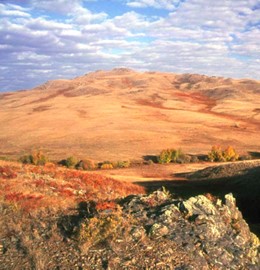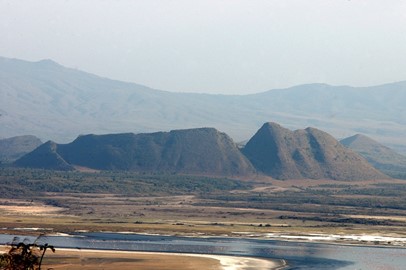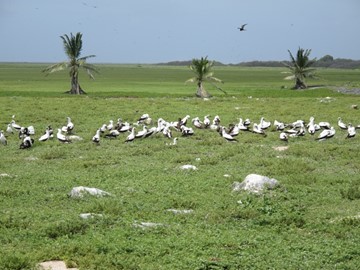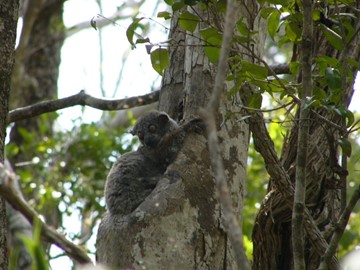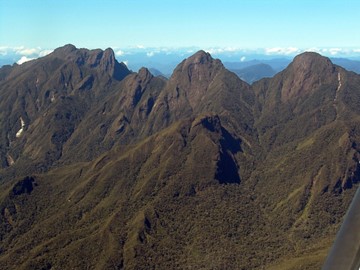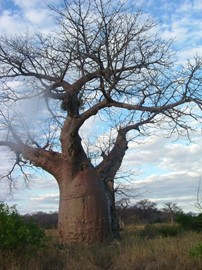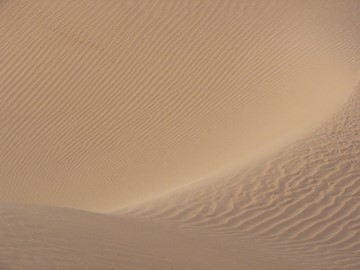category :: natural
Western Ghats
The Western Ghats, a UNESCO World Heritage Site in India, is a biodiversity hotspot renowned for its rich flora and fauna. This mountain range, running parallel to the western coast, hosts numerous endemic species, including rare plants, animals, and birds, thriving in its diverse ecosystems like tropical rainforests and grasslands. It also plays a vital role in regulating the region's monsoon climate and supporting livelihoods through its rivers and forests. Recognized for its ecological significance, it s... Read More
Great Himalayan
The Great Himalayan National Park, a UNESCO World Heritage site in India, is renowned for its breathtaking biodiversity and pristine natural landscapes. This protected area harbors a rich variety of flora and fauna, including rare and endangered species, thriving amidst diverse ecosystems ranging from alpine meadows to dense forests. Its recognition by UNESCO underscores its global significance for conservation and ecological research, offering a sanctuary for wildlife and a haven for nature enthusiasts.
Ujung Kulon
Ujung Kulon National Park, a UNESCO World Heritage site in Indonesia, is a biodiverse sanctuary renowned for its lush rainforests, pristine beaches, and rare wildlife. It serves as the last refuge for the critically endangered Javan rhino, alongside other species like leopards, gibbons, and sea turtles. The park’s volcanic landscape, including the iconic Krakatau island, adds to its ecological and historical significance. Conservation efforts here focus on protecting its unique ecosystem and promoting susta... Read More
Komodo
Komodo National Park, a UNESCO World Heritage site in Indonesia, is renowned for its unique biodiversity, most notably as the habitat of the Komodo dragon, the world’s largest lizard. Established in 1980, the park encompasses a group of volcanic islands with rugged terrain, pristine beaches, and vibrant coral reefs, supporting a rich array of marine and terrestrial species. It serves as a critical conservation area, protecting endangered wildlife and offering visitors a glimpse into a prehistoric ecosystem.... Read More
Lorentz
Lorentz National Park, a UNESCO World Heritage site in Indonesia, is renowned for its exceptional biodiversity and stunning landscapes. This protected area encompasses a range of ecosystems, from coastal mangroves to alpine peaks, harboring rare species like the long-beaked echidna and the southern cassowary. It also holds significant cultural value, with indigenous communities maintaining traditional lifestyles amidst its vast wilderness. The park stands as a critical conservation zone, showcasing Indonesi... Read More
Sumatra Tropical Rainforest
The Sumatra Tropical Rainforest, a UNESCO World Heritage site in Indonesia, is renowned for its rich biodiversity and ancient ecosystems. This protected region is home to rare species like the Sumatran orangutan, tiger, and rhinoceros, thriving within its lush, dense forests. Its global significance lies in its role as a critical conservation area, preserving unique flora and fauna for scientific study and environmental balance.
Lut Desert
The Lut Desert, a UNESCO World Heritage site in Iran, is a striking natural wonder renowned for its extreme heat and unique geological formations. This vast desert features towering sand dunes, dramatic yardangs sculpted by wind erosion, and one of the hottest land surfaces on Earth. Its otherworldly landscape highlights the beauty and resilience of life in harsh arid conditions, earning it global recognition for its scientific and aesthetic value.
Isole Eolie
Isole Eolie, a UNESCO World Heritage site in Italy, comprises a volcanic archipelago renowned for its dramatic landscapes and geological significance. This cluster of islands features active volcanoes, such as Stromboli and Vulcano, alongside rugged coastlines, thermal springs, and crystalline waters. Valued for its natural beauty and scientific importance, it offers insights into volcanic processes and Mediterranean ecosystems shaped over millennia.
Dolomites
The Dolomites, a UNESCO World Heritage site in Italy, are renowned for their dramatic limestone peaks and striking geological formations. This mountain range features a unique blend of rugged cliffs, deep valleys, and vibrant alpine meadows, shaped by millions of years of natural processes. Celebrated for their scenic beauty and scientific value, they offer a stunning testament to Earth's history and biodiversity.
Mount Etna
Mount Etna, a UNESCO World Heritage site in Italy, is one of the world’s most active volcanoes, renowned for its exceptional geological and scientific value. This towering stratovolcano features diverse volcanic landscapes, including craters, lava flows, and ash fields, shaped by frequent eruptions over millennia. Its unique ecosystem supports rare flora and fauna adapted to the harsh volcanic environment. Etna’s ongoing activity and striking natural beauty make it a globally significant natural landmark.
Yakushima
Yakushima, a UNESCO World Heritage site in Japan, is renowned for its ancient cedar forests and unique subtropical ecosystem. This lush island features towering, moss-covered trees, some over 1,000 years old, thriving in a rugged, mountainous landscape. Its exceptional biodiversity and natural beauty, including rare flora and fauna, highlight its global significance as a pristine ecological treasure.
Shirakami Sanchi
Shirakami-Sanchi, a UNESCO World Heritage site in Japan, is a pristine expanse of ancient beech forest renowned for its rich biodiversity and untouched natural beauty. This mountainous region harbors a diverse ecosystem, including rare species like the Japanese black bear and the golden eagle, thriving amid dense woodlands. Its cultural and ecological value lies in its representation of the last remaining virgin beech forests in East Asia, offering a window into the region's natural heritage.
Shiretoko
Shiretoko, a UNESCO World Heritage site in Japan, is a pristine natural region renowned for its rich biodiversity and dramatic coastal landscapes. This remote peninsula features rugged mountains, dense forests, and a unique ecosystem supporting rare species like the Blakiston’s fish owl and Steller’s sea eagle. Its seasonal sea ice fosters a productive marine environment, sustaining diverse wildlife and fisheries. Shiretoko exemplifies an untouched wilderness harmonizing terrestrial and aquatic habitats.
Ogasawara Islands
The Ogasawara Islands, a UNESCO World Heritage site in Japan, form a remote subtropical archipelago renowned for their unique biodiversity and evolutionary significance. These volcanic islands host over 440 species of native plants and rare endemic wildlife, such as the Bonin flying fox, thriving in isolation from mainland influences. Their pristine beaches, coral reefs, and rugged landscapes highlight a natural laboratory of ecological adaptation and geological history.
Saryarka
Saryarka, a UNESCO World Heritage site in Kazakhstan, is a vital ecological region featuring pristine steppe landscapes and wetlands. It encompasses critical habitats, including lakes that serve as key stopover points for migratory birds, such as the Siberian crane. Recognized for its biodiversity and natural beauty, this site highlights the importance of preserving unique ecosystems and traditional land use practices.
Lake Turkana
Lake Turkana, a UNESCO World Heritage site in Kenya, is a striking desert lake renowned for its unique jade-green waters and rich biodiversity. Often called the 'Cradle of Mankind,' it hosts significant archaeological sites with fossils and artifacts that trace early human evolution. The surrounding harsh volcanic landscape, coupled with its role as a vital habitat for migratory birds and rare species, underscores its global scientific and ecological value.
Kenya Lake System
The Kenya Lake System in the Great Rift Valley, a UNESCO World Heritage site, encompasses three interconnected lakes—Bogoria, Nakuru, and Elementaita—renowned for their ecological diversity and stunning natural beauty. These soda lakes support vast populations of flamingos, endangered species like the black rhino, and over 450 bird species, thriving in a dramatic volcanic landscape. Recognized for its outstanding biodiversity and geological significance, the site highlights the delicate balance of life in a... Read More
Mount Kenya
Mount Kenya, a UNESCO World Heritage site in Kenya, is a striking volcanic peak renowned for its rich biodiversity and dramatic landscapes. It features rugged glaciers, alpine meadows, and dense forests that support a variety of unique wildlife, including rare species like the Mount Kenya leopard. This natural wonder also holds cultural significance for local communities, who regard it as a sacred site. Its pristine ecosystems and geological beauty make it a global treasure.
Phoenix Islands
The Phoenix Islands, a UNESCO World Heritage site in Kiribati, form one of the world’s largest protected marine areas, encompassing a pristine cluster of coral atolls and lagoons. This remote Pacific archipelago harbors vibrant ecosystems, including extensive coral reefs, diverse fish populations, and critical seabird nesting sites. Recognized for its ecological significance, it serves as a vital sanctuary for marine biodiversity and a living testament to natural heritage.
Tsingy de Bemaraha
Tsingy de Bemaraha, a UNESCO World Heritage site in Madagascar, is a striking limestone karst landscape featuring jagged peaks, deep canyons, and a network of underground rivers. This unique geological formation, often called a 'stone forest,' hosts diverse ecosystems with rare plant and animal species, including lemurs and endemic flora. Its rugged terrain and natural beauty make it a globally significant site for biodiversity and geological study.
Rainforests of the Atsinanana
The Rainforests of the Atsinanana, a UNESCO World Heritage site in Madagascar, are a biodiversity hotspot renowned for their unique ecosystems and endemic species. These tropical rainforests host an exceptional array of flora and fauna, including rare lemurs and diverse plant life found nowhere else on Earth. Recognized for their global ecological significance, they face threats from deforestation and human activity, underscoring the need for conservation efforts.
Lake Malawi
Lake Malawi, a UNESCO World Heritage site in Malawi, is renowned for its exceptional biodiversity and crystal-clear waters. This freshwater lake, one of the African Great Lakes, hosts an extraordinary variety of fish species, including hundreds of endemic cichlids found nowhere else on Earth. Its ecological significance and stunning natural beauty make it a globally recognized treasure.
Kinabalu Park
Kinabalu Park, a UNESCO World Heritage site in Malaysia, is renowned for its rich biodiversity and stunning landscapes. Home to Mount Kinabalu, Southeast Asia’s highest peak, the park boasts over 4,500 species of flora and fauna, including rare orchids and the carnivorous pitcher plant. Established in 1964, it serves as a vital conservation area and a popular destination for ecotourism, offering visitors a chance to explore its unique ecosystems and natural beauty.
Gunung Mulu
Gunung Mulu, a UNESCO World Heritage site in Malaysia, is renowned for its exceptional biodiversity and stunning geological formations. This national park features vast limestone caves, including the world’s largest cave chamber, and dense rainforests teeming with unique flora and fauna. Its dramatic peaks, deep gorges, and hidden underground rivers make it a globally significant natural wonder, attracting researchers and adventurers alike.
Banc d'Arguin
Banc d'Arguin, a UNESCO World Heritage site in Mauritania, is a vital coastal ecosystem renowned for its rich biodiversity. This national park serves as a critical breeding ground for migratory birds and supports a diverse marine life, including fish, mollusks, and crustaceans. Its unique blend of desert and ocean environments has sustained traditional fishing communities for centuries, making it a globally significant natural and cultural treasure.
